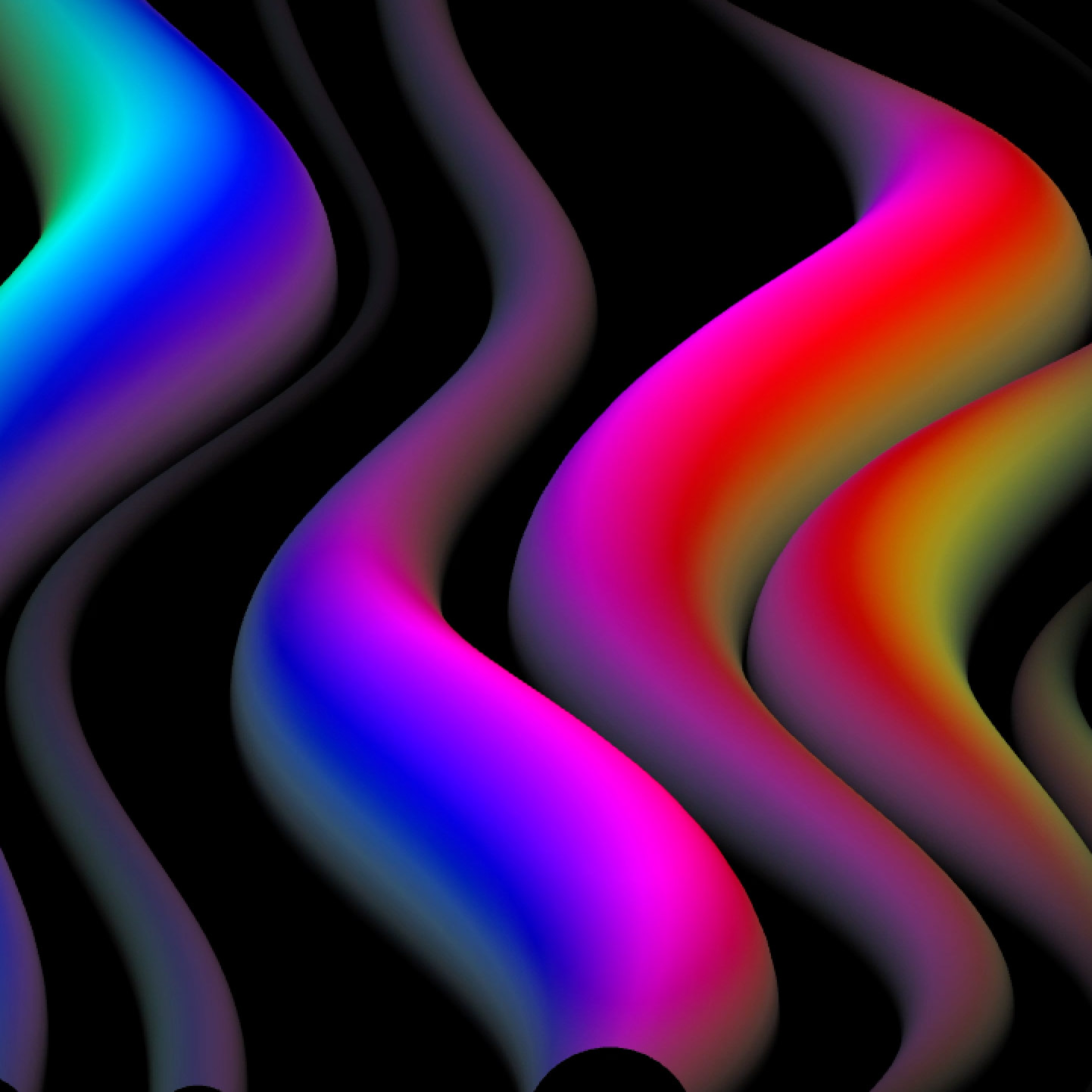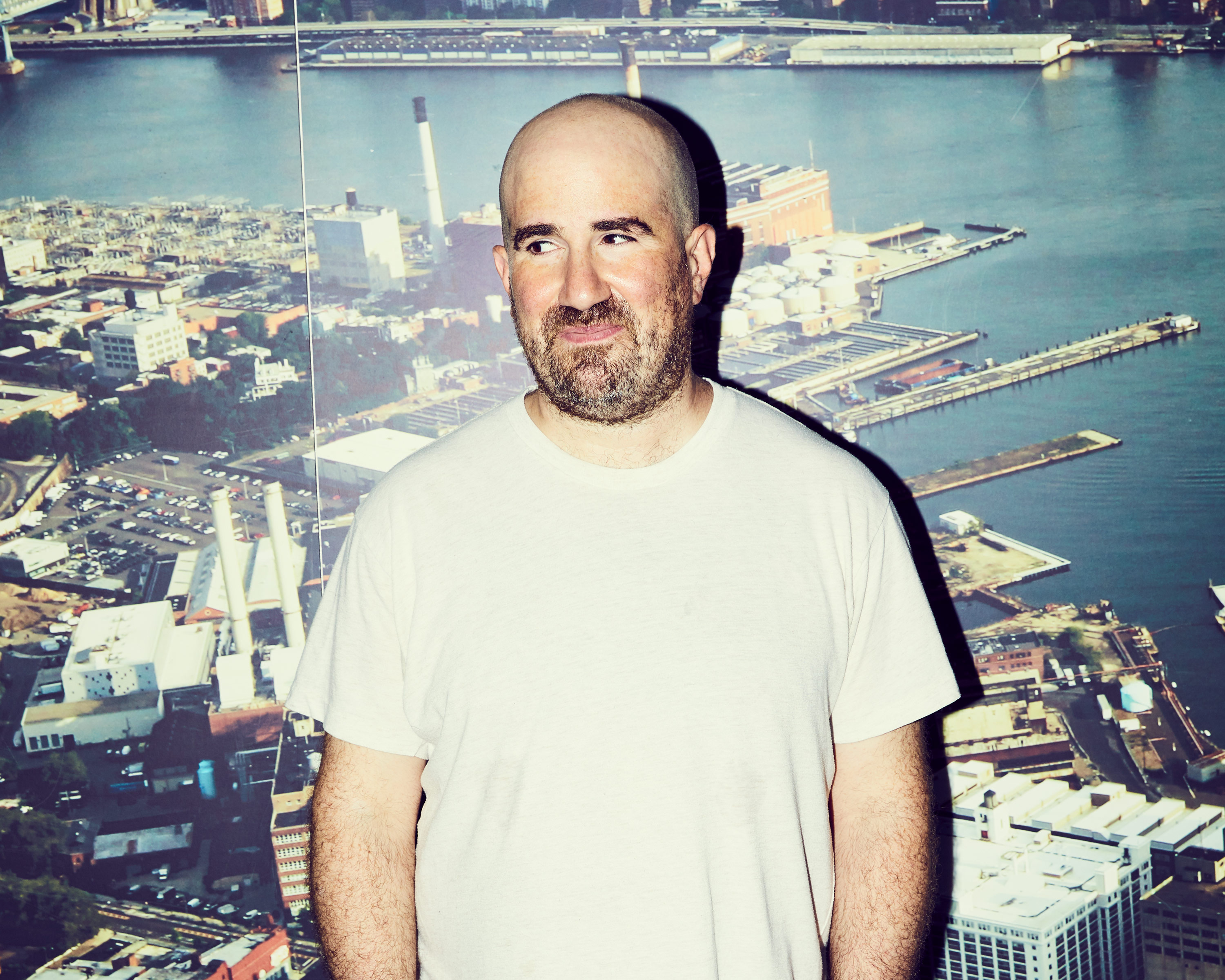
- Interview by Tina Essmaker June 22, 2017
- Photography by Meredith Jenks
Zach Lieberman
- artist
- educator
- programmer
New media artist and programmer, Zach Lieberman, fell in love with coding during the early days of the web, but he wasn’t exactly sure how to turn his newfound interest into a career. Here, he reflects on his path, including the people who believed in him early on. He also talks about his desire to build community through cofounding openFrameworks and The School for Poetic Computation, his belief that technology should always be in service of the idea, and why we should embrace the gift of curiosity in ourselves and others.
Tell me about where you grew up and how your childhood influenced your ideas about creativity. I grew up in Evanston, which is a suburb north of Chicago. From an early age, I was into art and experimentation, but one of the things that had a profound impact on me was that my parents didn’t have normal jobs. My mom was a Lamaze teacher and had all of these props and things in the trunk of our car, like a plastic pelvis and diagrams. She once made a vagina out of a Quaker Oats container and used my sister’s doll and attached one of those old telephone cables as an umbilical cord.
My father was an English teacher who later became a professional storyteller. He took a workshop on storytelling and fell in love with it. When I was young, he started telling stories at the local library and became better and better at it. There’s a circuit for storytelling. He toured and told Jewish folktales and stories about our family, which was super embarrassing for me. I used to charge him royalties for telling stories about me. (laughing) It was amazing as a kid to watch him take on a new career and rally to make something from nothing. That was inspiring to me.
What forms of creativity were part of your life when you were younger? I did a lot of drawing. My sister and I also did theater. But I remember going into my basement and grabbing random things and making sculptures. For me, it was also magical when my parents took me to the Art Institute or museums downtown.
Did you have any idea you’d be doing what you do now? No idea. Oh, there was one thing that happened. I saw this amazing TV show on PBS. It was so crazy! To this day I can’t forget it. It was something about people who take cars and turn them into artwork. There was someone who took a VW Beetle and put light bulbs all over it. It looked like an old Broadway sign and it displayed patterns. He drove around the city and there were patterns of light on the outside of the car. It was only later when I was doing this kind of work that I thought about that show. As a kid, to be face to face with such a weird idea can open your mind to different possibilities.
Since your parents didn’t work traditional jobs, your mind was already open to the possibility of not having to work a 9-to–5. When it came time to go to college, did you have an idea of what you wanted to do? I went on a weird journey. I was at RISD a few weekends ago and I was reminded of that process. I went to a liberal arts college and I hated it. I didn’t know what to do, but after the first year I dropped out and went to Providence, RI.
There’s this thing called AmeriCorps where you can volunteer for a year and since I didn’t know what I wanted to do, I did that. I did volunteer work during the day and at night I took classes at the University of Rhode Island. I took History of Jazz and Gender Studies. My parents were worried that I was going to drop out of college, so I was trying to show them that I was okay. What I discovered is that I really liked night school because the students really wanted to be there. A lot of them were working parents or people who came back to school to work on their degree after time away. It was such a different vibe.
I wanted to continue in that vein, so I went to Hunter College and fell in love with the art department and particularly the print-making studio. I spent all of my time print-making: etching, lithography, some silkscreen.
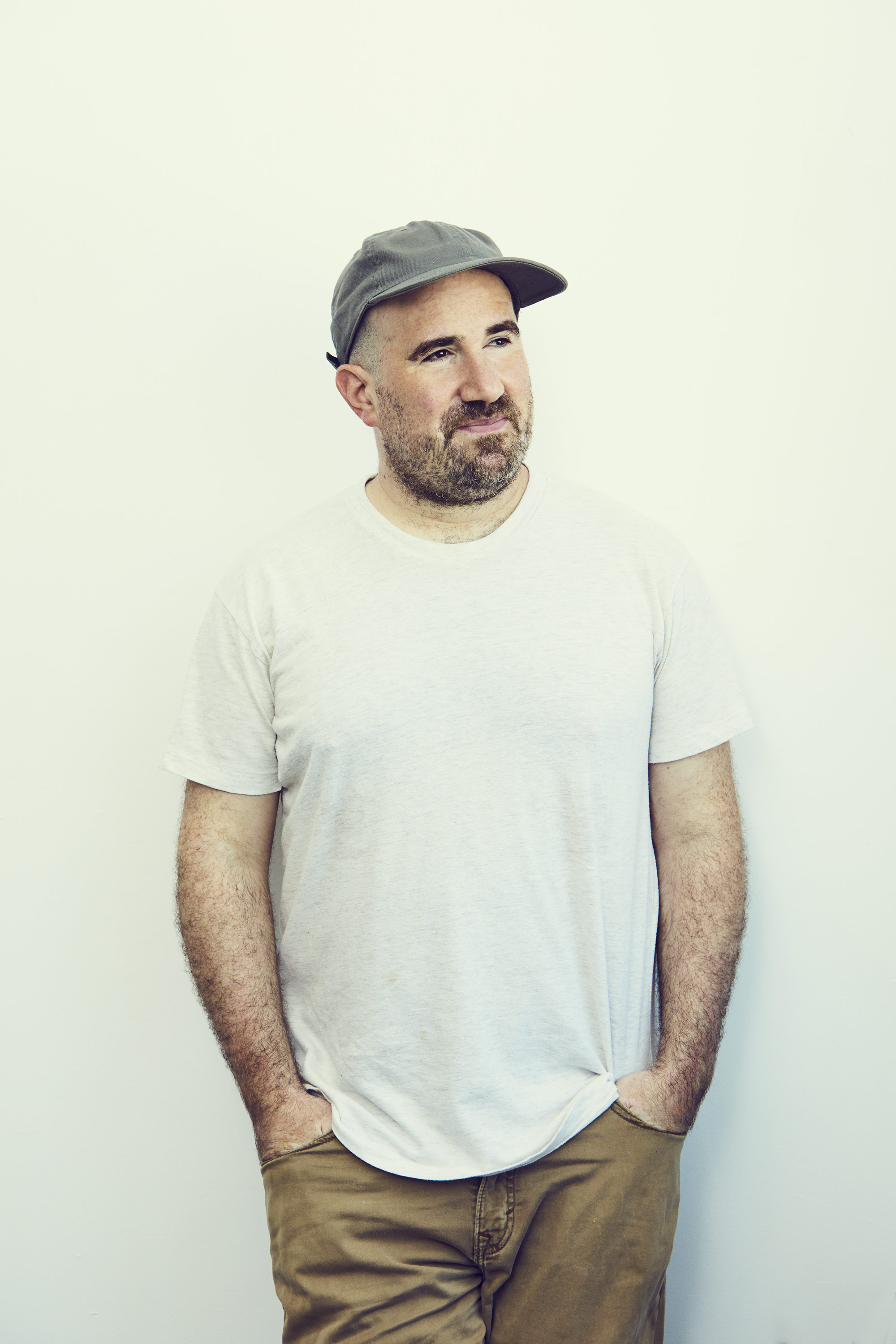
“There were things people were doing with animation online and the moment I started to play with that, I was immediately hooked…Here was this system where you could write a line of code and make something move across the screen. I fell in love with that.”
So you started working in the physical realm? Yeah. I took sculpture classes, too. Hunter has a great art department because the MFA is a really strong program. That filters down to the BFA and BA levels. I loved that. I had no idea what I wanted to do, but at that time, I had really random jobs and everybody in the art department was talking about web design. I graduated in 2000 when Y2K was in the air.
My art friends got jobs in the web industry, so I bluffed my way into a job. I came to the interview and they wanted to see a design portfolio, but I just had slides of my artwork. I don’t know why they hired me, but what I discovered is that I could go to Barnes & Noble and buy big books on Photoshop and Illustrator. I’d go to work in the morning and not know what was going on. At lunch, I’d go hide and read my books and discover the software. Once you know what kinds of questions to ask, you can figure it out.
It was such a weird time because the kind of work we were doing was designing coupon books for the internet—all this Web 1.0 stuff. And then the economy crashed. We started to have free time at the company I was at and I discovered Flash and ActionScript. There were things people were doing with animation online and the moment I started to play with that, I was immediately hooked. I always loved animation, but I didn’t know how to do it. Here was this system where you could write a line of code and make something move across the screen. I fell in love with that.
The other part of it was this: I liked the print-making studio because it’s a very social form of art making. You hang out together because nobody has a print studio on their own. There’s a lot of conversation that happens around process and technique. The Flash and ActionScript communities were similar in that there people making things and sharing code. For me, that really resonated. It seemed like the online equivalent of what I experienced in the print-making studio.
I still didn’t know what I was going to do, but I got excited about graphic design proper. I thought, I really love this programming thing, but maybe I should still go to graduate school and study design. I applied to a bunch of programs and wound up in a design technology program at Parsons. When I was there, I fell in love with using computation as an artistic medium and I learned different programming languages. I came out of those two years in a very different place than I thought I was going to be.
Tell me about your first few years out of college. At Parsons I met one of my professors named Golan Levin. He’s an amazing artist who teaches at Carnegie Mellon. He invited me to come work with him after graduation. That summer, we went to Ars Electronica, a really historic electronic music festival in Linz, Austria, and we started making projects together. We did that for many years and it became a rhythm. I made a living adjuncting at Parsons and flying to Europe to work and get paid in Euros. Golan and I also did residencies at Eyebeam, an arts and science research center here in New York. From there, we got into commercial work and were hired by agencies.
I taught at Parsons for about ten years and at some point I became a professor. When I was an adjunct I was really happy. I came in and had wonderful students and didn’t know anything about what happened behind the scenes. The moment I became a professor I started to not love what was happening in the university. Around that time there were a lot of things like universities building huge buildings, overseas campuses, and doing things with budgets that I didn’t understand. Cooper Union went from being a free school to tuition-based. I thought, this isn’t for me. So some friends and I started our own school in 2013 called The School for Poetic Computation, which is an alternative school based here in New York.
I also have a creative studio that I run with my wife, Molmol Kuo, who is an amazing artist. We do some commercial work and we have a crazy space in the Navy Yard. She loves electronics and I love software. My table is usually clean with just a laptop and hers is overflowing with wires and 3-D printers and stuff. We’ve worked on a lot of different projects together.
Now I spend about a third of my time teaching, a third of my time doing commercial work, and a third of my time doing art. It doesn’t always get divided exactly, but that’s pretty much how I split my time.
“…I helped start and run a tool called openFrameworks, which is a tool for artists. We work with software and write code, but we take the things we learn and publish them in the form of reusable tools to make this framework for artists who want to work with software. Even more than that, it’s a community.”
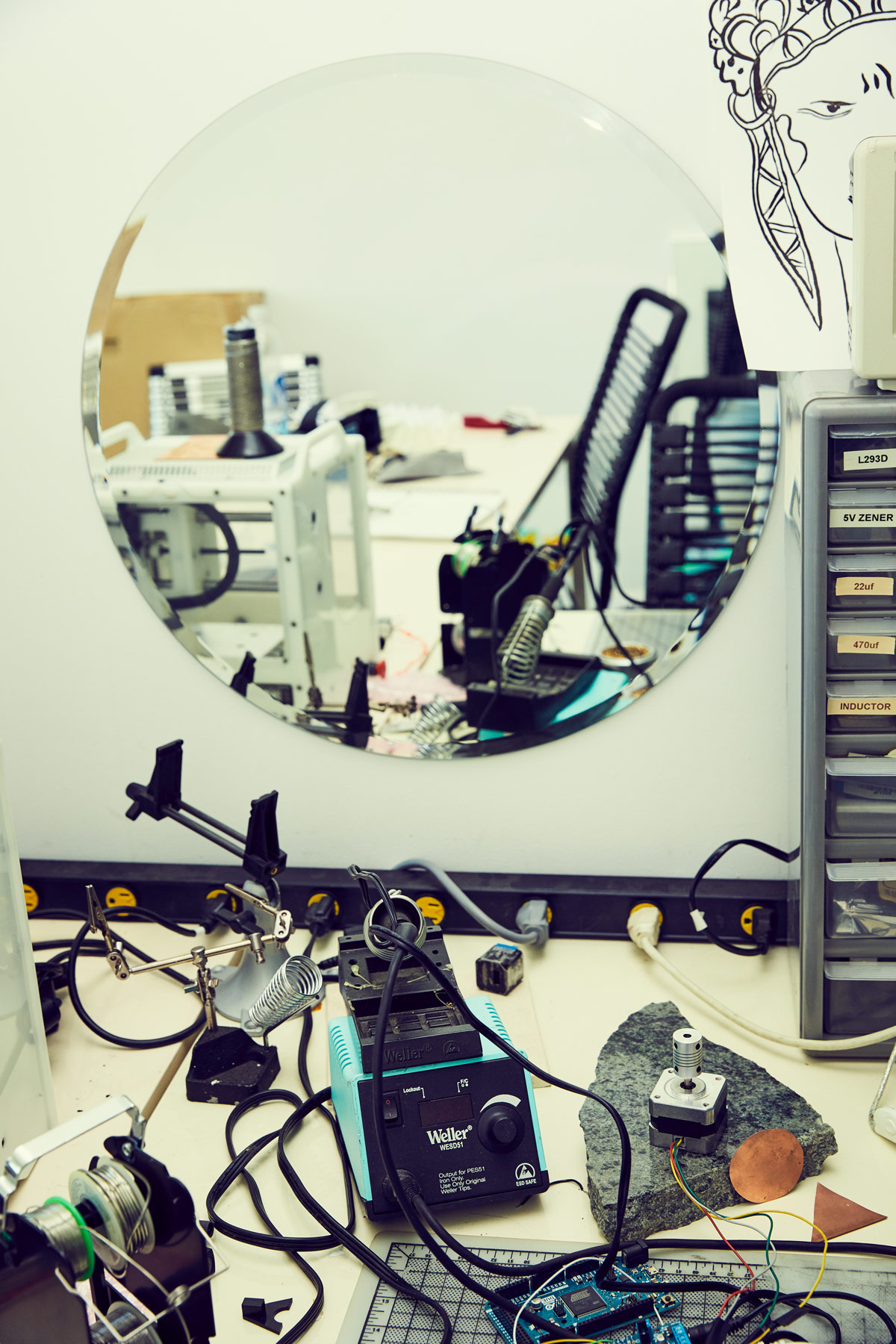
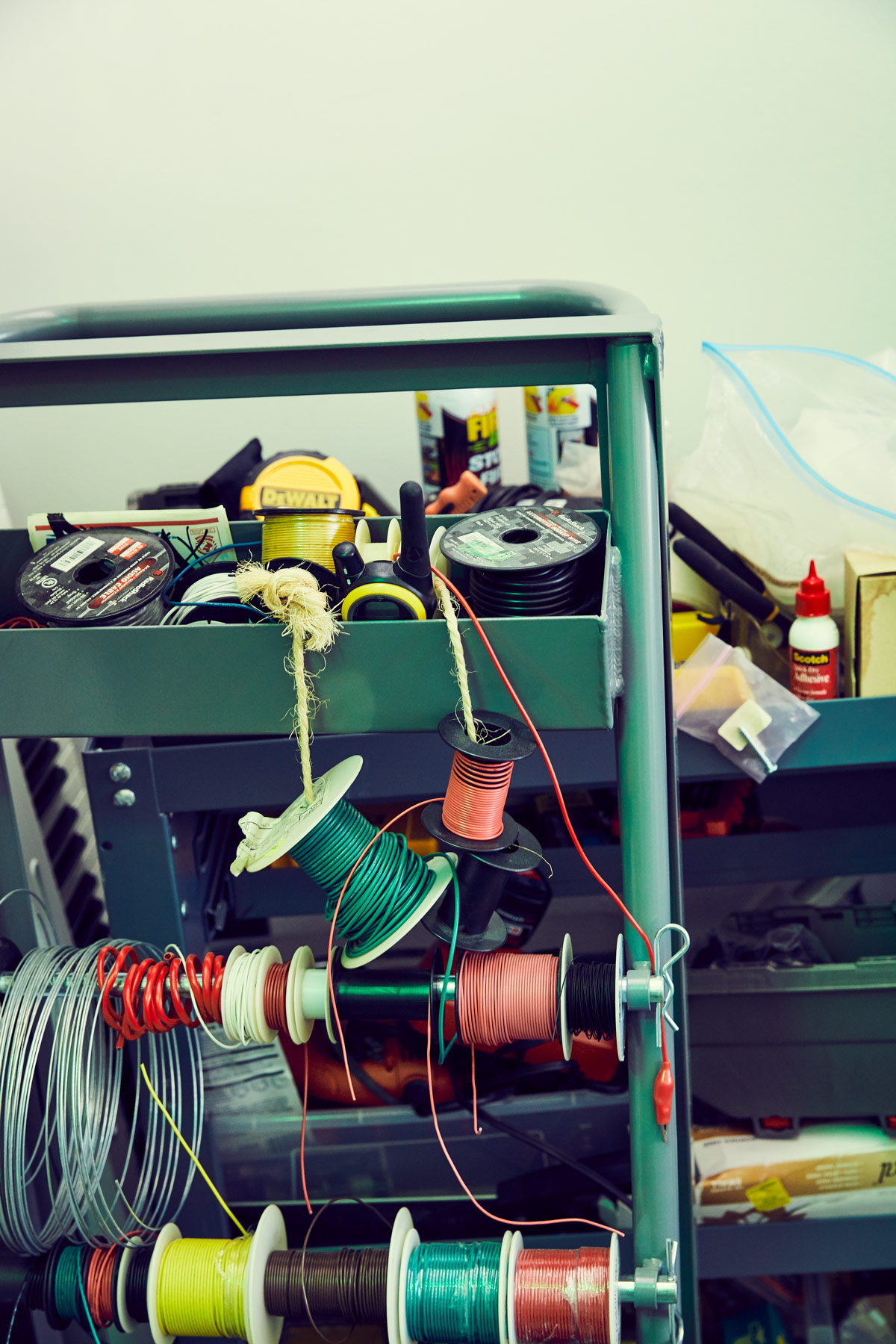
You mentioned your professor, Golan, earlier. Do you consider him a mentor? Yeah, Golan was a very important person in my life, but even before that there was a printmaking professor, Vinnie Longo, who I loved to work with. He opened his office at 2pm everyday and hung out with students and took young people really seriously. I loved that there was someone who cared about our work and took our ideas seriously. That was valuable.
I was drawn to Golan because he had come from the MIT Media Lab, which is a really special place. I was obsessed with what they were doing there. They had all these Java applets that I downloaded and decompiled so I could read the source code. Golan studied with John Maeda, who made a bunch of really beautiful posters in PostScript. I had tried to imitate John’s work by learning PostScript and creating knockoffs that I didn’t show to anyone, except for Golan. He was really excited about them. Golan is five years older than me and Maeda is five years older than Golan; it felt like this family tree in a way. I learned so much from him being thrown into the deep end working on projects right after graduation.
It’s an incredible position to be in to be asked to work with someone who’s established right after school. What an opportunity. Yeah, and it was very collaborative. It wasn’t work for me, but work with me. And we would get into these crazy arguments and fight like a married couple. He liked to work at night and I like to work really early, so we became this weird 24-hour duo where he’d leave the studio at 5am and I’d come in and read Post-it notes he had left on the CRT monitor. It was really magical.
I love working with my wife. She’s tough on me, but in a really good way. I think it’s hard as an artist who has some level of success because people are supportive of your work and you don’t get a lot of people telling you how it could be better. It’s hard to know when your work is really good versus when it’s just okay. And my wife is this amazing, tough voice. That’s special to find.
Then there’s Amit Pitaru, who is one of the best interaction designers in the world. He and I met after one of those Ars Electronica performances. I hadn’t slept for days and must have smelled awful. Golan and I did the performance, it went well, and I went and slept for 18 hours. I woke up and went to the Processing booth—Processing is a programming tool for artists. Amit was next to me. I met him and we have since became good friends. Many times when I get stuck on projects, I go to Amit. He’s a great listener and offers me different perspectives. That’s been helpful.
“Students and young people see this medium I’ve been exploring for a long time with such fresh eyes. That’s a gift. They are seeing the potential of what can be done…”
It’s interesting that you had a lot of influential people in your life and now you are that for others through your work as a teacher. Do you feel a desire to contribute to something bigger than yourself and is teaching an opportunity for you to do that? Definitely. For me, it’s really important to find ways to help other artists. Pretty early on, I helped start and run a tool called openFrameworks, which is a tool for artists. We work with software and write code, but we take the things we learn and publish them in the form of reusable tools to make this framework for artists who want to work with software. Even more than that, it’s a community. It’s a group of people who come together to share code.
One thing I do now that I started last year is open office hours. Once a week, I announce on Twitter when I’m going to have them. I spend two to three hours talking to people in person at my studio or online. I’ve spoken to people from all over the world and what I love is that I get a wide range of questions—sometimes they’re technical, sometimes more theoretical. For me it’s great because I’m mentally prepared to listen. It sounds nice, but in a way, it’s selfish. If people email me to meet, I tell them to come to my open office hours.
That’s wonderful. Even though you’re giving in those moments, I imagine it’s also valuable for you. What have you learned or gained through your open office hours and teaching? I’m a big believer that curiosity is infectious. Students and young people see this medium I’ve been exploring for a long time with such fresh eyes. That’s a gift. They are seeing the potential of what can be done and they are enthusiastic. Sometimes I feel like a vampire in that I’m trying to get that energy and see the world the way they see it.
Further into your career it’s easy to get into a routine. Students ask the best questions and challenge the process and your thinking. It’s so valuable. At Parsons I loved working with undergrads because they were like why are we doing this. They questioned everything.
This is an example of that energy I’m talking about. A couple years ago The School for Poetic Computation (SFPC) was invited to do a project for a festival in Houston called Day for Night. I teach a class at SFPC about recreating the past. Every week I come in and talk about a different artist, like Vera Molnár, who’s an amazing Hungarian artist who wrote software to control a pen plotter to make algorithmic drawings in the 1970s. She makes really beautiful algorithmic art. The students then have to take one of the artists works and recreate them using modern tools.
So we did this project for the Day for Night festival where we set up two LED screens with visuals on one and code on the other. We picked five artists and the students created sketches based on their works. The visuals and code were side by side so when a number in the code changed, the visuals changed as well. You could see the direct relationship between the code and visual form. I got so inspired by the students and their love of sketching that I started doing it. For the last year and a half I’ve been doing daily sketching which I share online.
Oh, I saw your sketches on Instagram. How has that daily practice influenced you? It’s been extremely helpful. I recommend it to everybody. One of the challenges as an artist is that the longer you work on something the bigger the payoff has to be. The more time you invest, the worse it is when the thing doesn’t pay off.
The daily sketching is great because it doesn’t have to work. If you spend half an hour on something, it doesn’t have to be good. That takes a lot of pressure off of you as an artist. Also, I think there are things you can learn by seeing how other people see your work. You have your own frequencies and the world has its own. Sometimes they resonate and sometimes they don’t. If I make a sketch I love and other people don’t like it as much, that’s interesting—that’s a data point. I can learn from that. Or I might make something that feels like a throwaway to me, but people really love it.
I try to approach it like a student where I don’t worry about the outcome. To me, it feels like I’m walking around dark alleys and asking, what’s here? When you do client work, it feels like you’re walking around in the daytime. You know where you need to go. There’s something amazing about letting your own interests and intuition guide you.
At this point, do you feel creatively satisfied? I feel super satisfied. Sketching is this intensely personal thing, like a diary. Last year was the anniversary of my father passing away, and I was also approaching turning 40, which I was anxious about. Because I was so emotional, I didn’t know what to do with my sketches. There’s this motion capture data you can get and there’s one of a person walking. It’s 16 points of the body and the points are not happy or sad—they just are. I remember feeling so stuck in that moment and then I found this data set and started to explore it. Those sketches are my response to feeling alone and figuring out how to process that moment.
A lot of times, the sketches get turned into projects for clients, too. For example, I did a lot of sketches about the body last year using contour and gestural movements and typography. I was approached by Penguin Random House because they were publishing Margaret Atwood’s new novel, Hag-Seed. They wanted me to do something for the London Literature Festival. It was exciting because I took the sketch ideas and turned them into interactive work that people could explore using their bodies to control typography on a screen.
And then there’s the school, which I love. We’re creating a community of students. That’s my advice to artists: find your community of people, and if it doesn’t exist, then build it. Invite people into it and expand it.
“I believe that the projects should never be about the technology. Technology should always be in service of the idea. The idea should be something that is poetic or that tells us about what it means to be human.”
What’s interesting to me about your work is the interaction and how the audience experiences it. I may not understand the code, but I can experience the output. For example, your project EyeWriter is a beautiful way to use code. I believe that the projects should never be about the technology. Technology should always be in service of the idea. The idea should be something that is poetic or that tells us about what it means to be human. When I create work, I don’t want people to point at it and say, “That’s dope software.” I want them to say, “That’s a beautiful idea.”
Interactive work is interesting because it’s artwork that exists because of the feedback loop with the audience. These projects are boring when nobody is there, but when someone approaches, it created a feedback loop. The questions we’re asking of the audience are simple: Are you there? Are you moving? Are you speaking? Not to say that the work is childish, but it’s early on in the medium and as it progresses we’ll be able to ask better and more interesting questions.
EyeWriter was an inspirational project to be part of because it was about asking a really fundamental question, which is, what would it be like to lose the thing in your life that make you who you are and how could technology in bring that back in some way? For that project, a group of us worked with TEMPTONE, a graffiti writer who has ALS and is paralyzed, but can move his eyes. We made this tool to help him draw again using his eye movements. That project also suggests the power of this medium, which is not only for creative work but also for assistive technology. I think there’s amazing potential for artists to be working in this realm.
“Technology changes, but the human desire to be surrounded by your loved ones and be captured remains…Things will change and new technologies will emerge. They may be good or bad for us, but I’m a believer that the human condition is constant.”
How do you see technology shaping the way we interact with each other and the world? There are technologies that are popular right now, like VR or AI. Take AI—it’s really just pattern recognition and math. Some of it is interesting, but I think there’s a problem with technology, which is that there are commercial forces behind these things that exist in our lives. And when there’s a commercial force behind something it’s harder to be critical about it. What I don’t want is for media artists to be the advertisers for big behemoths. That’s scary. I want artists to have the space to critically investigate.
People ask me about the future a lot, but I’m interested in the past, in the things that came before that inform our lives now, like telegraphy or sending images across a cable. I get a little worried that so much of the energy around technology is informed by science fiction culture and ideas about what the future will be like.
A few years ago, I did this project for Ars Electronica where I searched Google for family photos throughout the years. For example, if you search google images for “family” and a year, such as “family 1909” you see photos that look like they are from 1909. Photographs from the turn of the century are outside, they’re really long exposure, and people are not smiling. Then you see the technology changing. If you look at family portraits from 1900 to 2000, you start with cameras you have to use outdoors first, then the advent of cameras you can use indoors, then painted color, then actual color photography, then heavy flash, digital images, selfies, etc. Technology changes, but the human desire to be surrounded by your loved ones and be captured remains the same. Things will change and new technologies will emerge. They may be good or bad for us, but I’m a believer that the human condition is constant.
I have one more question. Have you thought about the type of legacy you’d like to leave through your work? Many years ago Golan and I did an exhibition at the ICC in Japan. It’s a beautiful museum for media art. We set up a bunch of projects for kids. On opening day there were thousands of kids running around. This grandma comes up to me and, in really broken English, she said, “You are giving the children good dreams.” That line has stuck with me. When I think about what it was like as a kid when I saw that VW Beetle with lights on it—that planted a seed in my mind. That did something to me. Artwork has the potential to plant seeds in people’s mind. If anything, I’d like to do that.
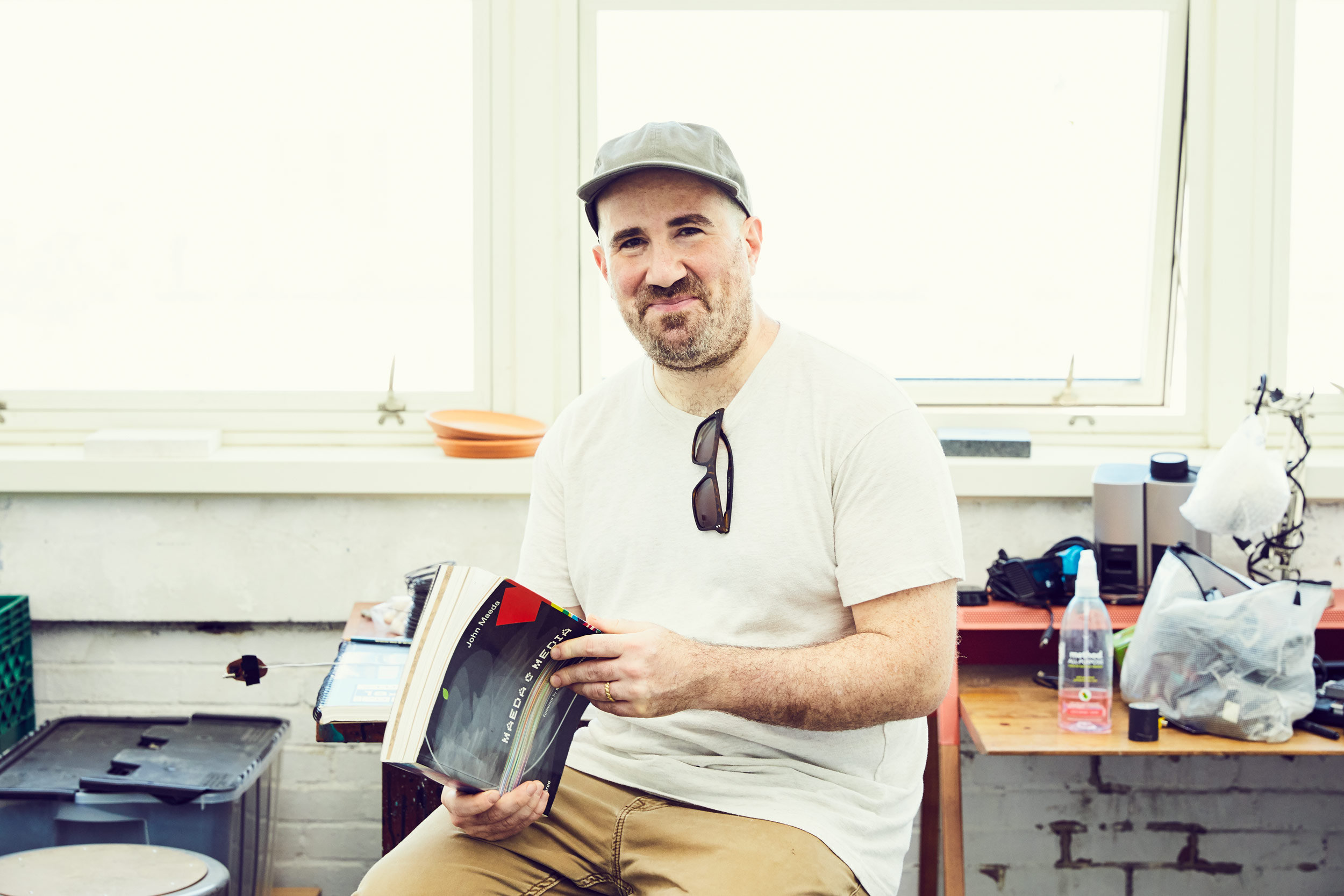
“People ask me about the future a lot, but I’m interested in the past, in the things that came before that inform our lives now…”
